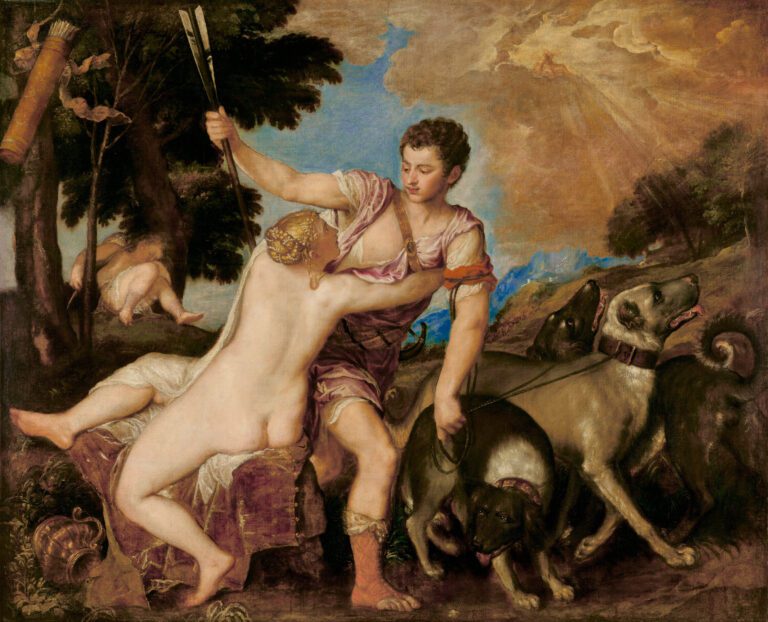Titian
Tiziano Vecellio, known as Titian, born around 1488-1490 in Pieve di Cadore in the Republic of Venice and deceased in Venice on August 27, 1576, established himself as the undisputed master of the Venetian school and one of the most influential figures in Western painting of the High Renaissance and Mannerism. Trained in the workshop of Giovanni Bellini and later a collaborator of Giorgione, completing several of his works after the latter’s premature death in 1510, he quickly gained official recognition, becoming the official painter to the Republic of Venice in 1516. His exceptionally long and prolific career subsequently unfolded in service to Europe’s most prestigious courts, notably that of Emperor Charles V, who ennobled him in 1533, and his son Philip II of Spain, for whom he developed princely iconography of unprecedented dignity and psychological depth. His religious masterpieces such as “The Assumption of the Virgin” for the Basilica of Santa Maria Gloriosa dei Frari, his sensual mythological nudes like the “poesie” series created for Philip II, and his magisterial portraits demonstrate an incomparable mastery of color and light that revolutionized the painting of his time.
Titian’s genius particularly resides in his innovative pictorial technique, characterized by the application of multiple layers of colored glazes that impart an internal luminosity and extraordinary chromatic richness to his works, progressing toward a bold freedom of brushwork in his late period, termed “pittura di macchia” (painting by patches). His exceptional creative longevity allowed him to evolve stylistically across several decades, from the harmonious clarity of his early works to the tormented expressionism of his final creations such as the “Pietà” intended for his own tomb, demonstrating constant artistic reinvention. A central figure of the Venetian Renaissance alongside Veronese and Tintoretto, whom he considerably influenced, Titian definitively established the primacy of color over drawing in the theoretical debate animating the artistic circles of his era. His colossal influence extends well beyond his time, nourishing the art of Rubens, Velázquez, Rembrandt, and numerous later masters through to the Impressionists and beyond, confirming his status as a founding father of modern European painting.

